History emerges during re-enactment of 1939 transcontinental flight
The sense of history crept up on me. At first it was just my own history: I remember a layover in North Bay in 1973. I was a very green First Officer on the DC-9. The layover stuck in my mind because of the 2-needle red pines along the shore of Lake Nipissing, where I went for a walk. They were the same pines that crowd the cottage on Belmont Lake where my parents met and where I have been going all my life. Now the North Bay shoreline has been nicely updated as a park, accessible to all. The pines, as far as I could see, have gone.
A friend had told me to check out the hangar in Kapuskasing. Made of concrete blocks, it was one of the original Trans Canada Air Lines hangars from the 1930's.
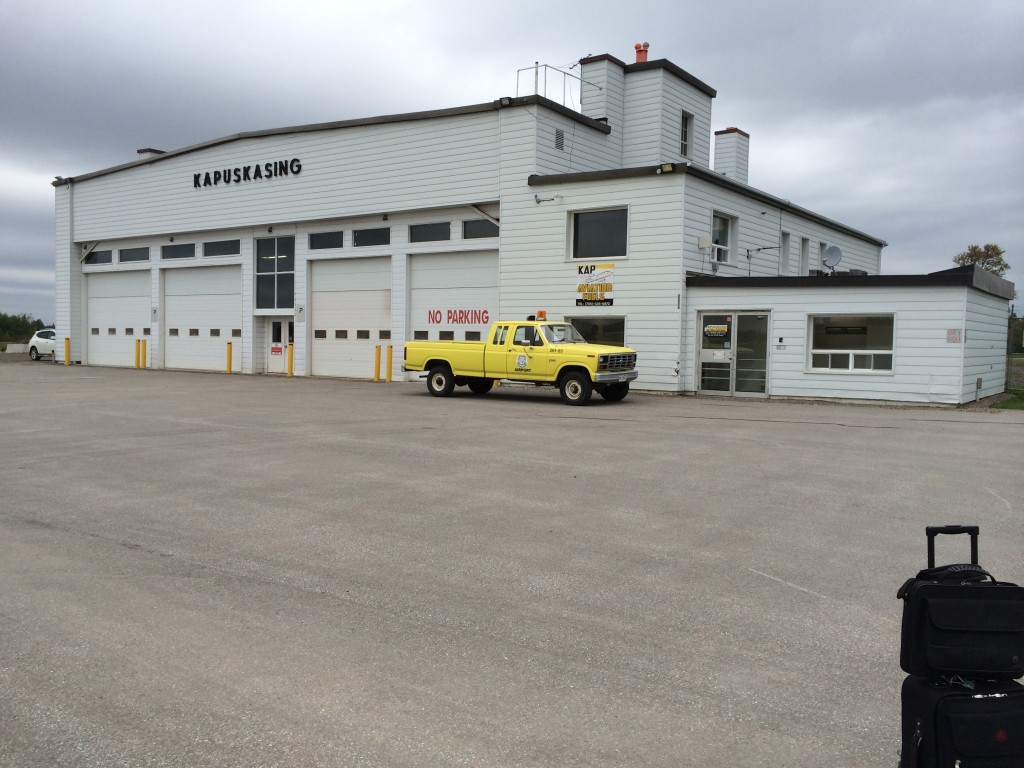 But there were no echos from the past. The hangar has been insulated and re-sided and is now used for vehicle maintenance. The lack of echoes may also have been brought on by the silence of the airport. The only aircraft movement I saw beside my own was an Ontario Hydro One helicopter which made an approach to the ramp in front of the Terminal and hover-taxied over to the gas pumps. I talked to some of the guys on board. They were going home from their job surveying for a new line. The runway was unused, except for me and the airport truck scaring off birds. When I left Sunday morning I was the only soul abroad, except for the birds. I backtracked runway 35 in the rain like a crazy man, weaving back and forth to scare them off.
But there were no echos from the past. The hangar has been insulated and re-sided and is now used for vehicle maintenance. The lack of echoes may also have been brought on by the silence of the airport. The only aircraft movement I saw beside my own was an Ontario Hydro One helicopter which made an approach to the ramp in front of the Terminal and hover-taxied over to the gas pumps. I talked to some of the guys on board. They were going home from their job surveying for a new line. The runway was unused, except for me and the airport truck scaring off birds. When I left Sunday morning I was the only soul abroad, except for the birds. I backtracked runway 35 in the rain like a crazy man, weaving back and forth to scare them off.
But there was a rainbow for the takeoff run.
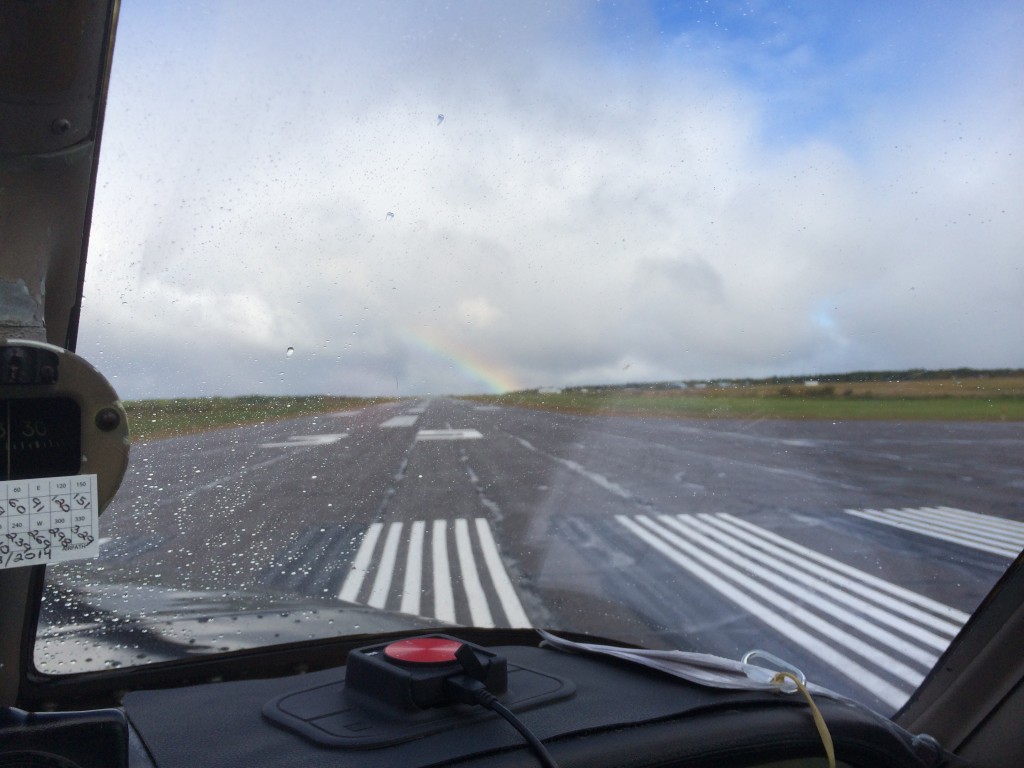 Sunday was the longest flight of the re-enactment: Kapuskasing to Winnipeg: 577 nautical miles; about four hours. I wanted to do it in one leg like the 1939 flight. But I also wanted to get there in time for the 2:30 pm tour at the Western Canada Aviation Museum.
Sunday was the longest flight of the re-enactment: Kapuskasing to Winnipeg: 577 nautical miles; about four hours. I wanted to do it in one leg like the 1939 flight. But I also wanted to get there in time for the 2:30 pm tour at the Western Canada Aviation Museum.
I was late, but I caught up with the tour. Gerry Suski, the tour guide, brought each exhibit to life with his enthusiasm. And as I belatedly realized, we were walking around inside one of those original Trans Canada Air Lines hangars.
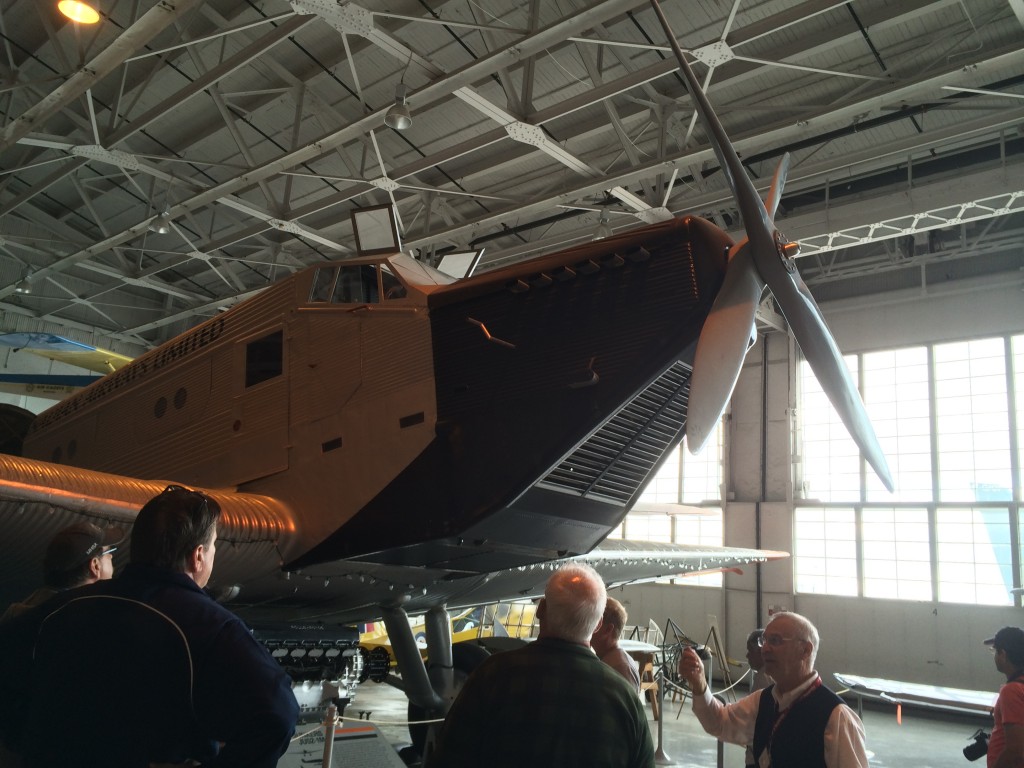 Here's Gerry talking about the Junkers JU-52-1M. (Gerry is bottom right, with the red pass lanyard around his neck.) It was as I took this photo that I realized that not only the exhibits were history. The beams overhead are joined with riveted gusset plates. Those hangar doors are a work of art. The flight I am re-enacting taxied up and shut down right out there, outside those doors. Parked over by the door to the restoration shop is the fuel truck that most likely fueled the 1939 Lockheed 10A.
Here's Gerry talking about the Junkers JU-52-1M. (Gerry is bottom right, with the red pass lanyard around his neck.) It was as I took this photo that I realized that not only the exhibits were history. The beams overhead are joined with riveted gusset plates. Those hangar doors are a work of art. The flight I am re-enacting taxied up and shut down right out there, outside those doors. Parked over by the door to the restoration shop is the fuel truck that most likely fueled the 1939 Lockheed 10A.
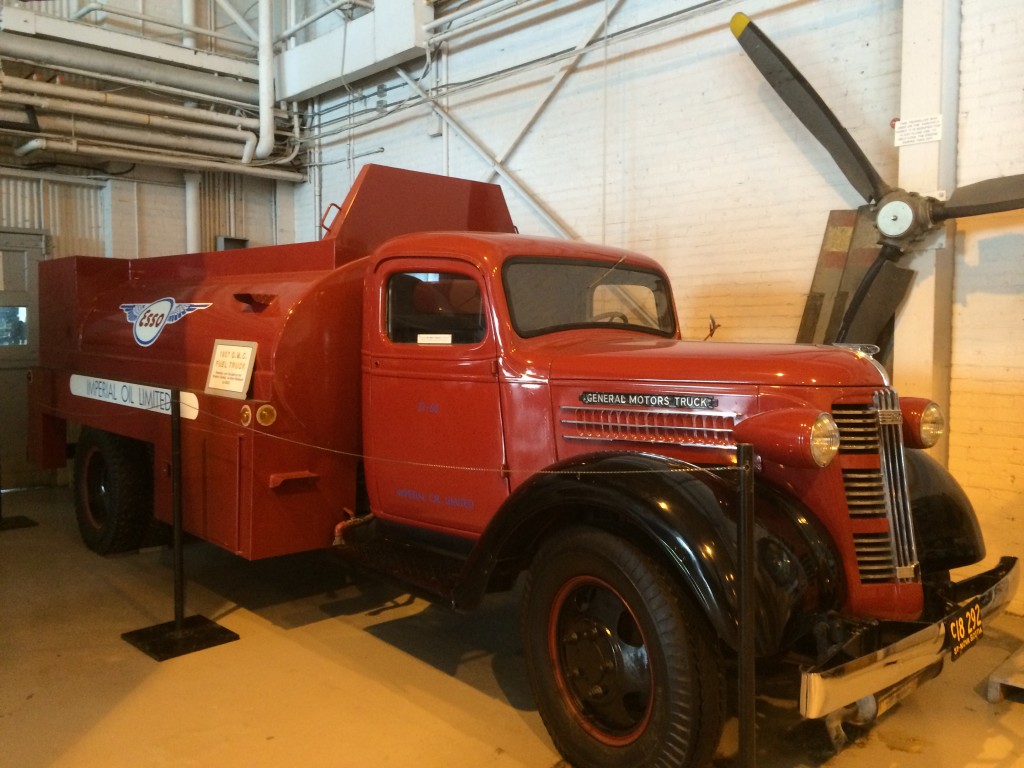 In the bookstore I bought both of Shirley Render's books. Shirley has been a Manitoba MNA and is now Director of the museum. Her book Doublecross details a huge chunk of Canadian aviation history of which I was completely unaware. James A. Richardson (the new CYWG terminal building is named after him) founded Western Canada Airways in 1927. He was a visionary, talking about over the pole flights to Europe. In 1930! The Bennett government (and later the Mackenzie King government) had anointed him as the go-to man for a national airline. But both governments dithered and delayed. Then in 1937 C.D. Howe, the new Minister of Transport, founded Trans Canada Air Lines as the national carrier. Richardson died of a heart attack in 1939 at the age of 54. Or perhaps it was a broken heart. In any event, the age of the deal sealed by a handshake was already dying.
In the bookstore I bought both of Shirley Render's books. Shirley has been a Manitoba MNA and is now Director of the museum. Her book Doublecross details a huge chunk of Canadian aviation history of which I was completely unaware. James A. Richardson (the new CYWG terminal building is named after him) founded Western Canada Airways in 1927. He was a visionary, talking about over the pole flights to Europe. In 1930! The Bennett government (and later the Mackenzie King government) had anointed him as the go-to man for a national airline. But both governments dithered and delayed. Then in 1937 C.D. Howe, the new Minister of Transport, founded Trans Canada Air Lines as the national carrier. Richardson died of a heart attack in 1939 at the age of 54. Or perhaps it was a broken heart. In any event, the age of the deal sealed by a handshake was already dying.
I had always admired C.D. Howe's (the Minister of Everything) energy and vision. Reading Doublecross was like finding out Bach and Beethoven were cantankerous. No, it was more like reading how Richard Wagner, the composer if the Ring Cycle, was anti-semetic and a complete jerk.
It felt good to be flying again. Wednesday I flew to Regina, and Friday to Lethbridge. There a wonderful surprise awaited: another of the original TCA hangars, this one in pristine condition.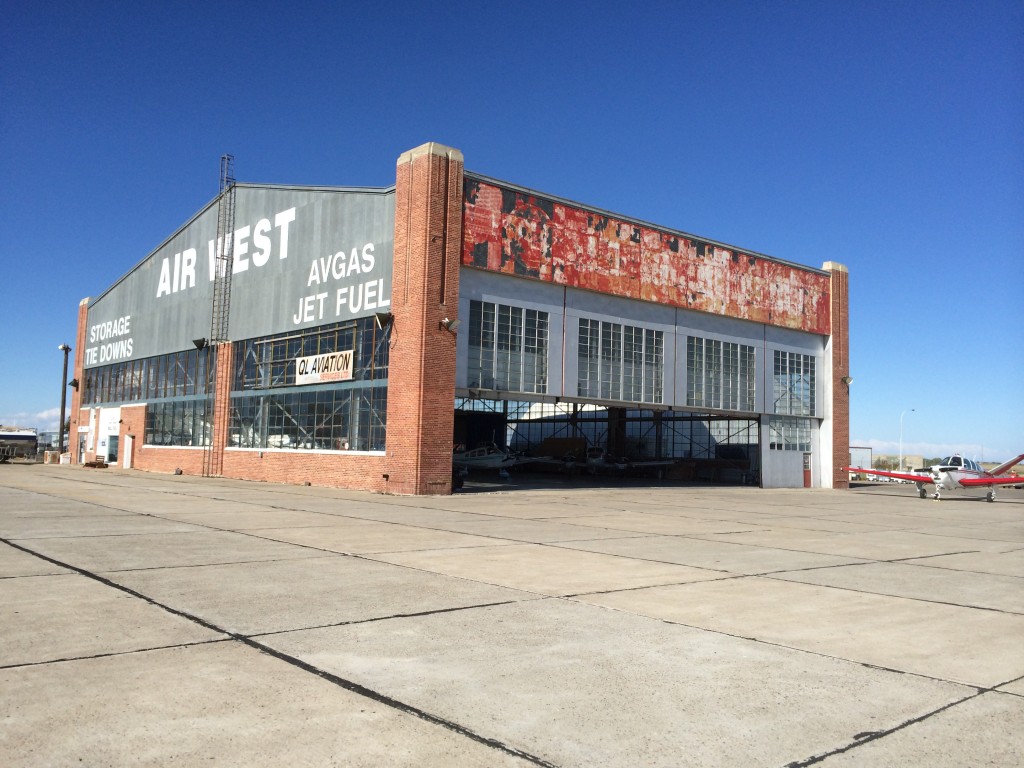
I had spoken with Geoff Price on the phone the day before to arrange for an oil change. It turns out Geoff is the owner of this beautiful hangar. He has owned it twice, in fact. He bought it in 1986; sold it in 1988. Then he bought it again in 1993. Fortunately for all of us, it has been declared a heritage site, unlike its cousin in Winnipeg, which has been sold to Calm Air. (The Western Canada Aviation Museum will move to a new facility contiguous with the airport terminal.)
Geoff came out to the ramp to meet me and immediately arranged to have the Bonanza pulled inside. Here she is during the oil change. The mechanic is Bill Mehlen.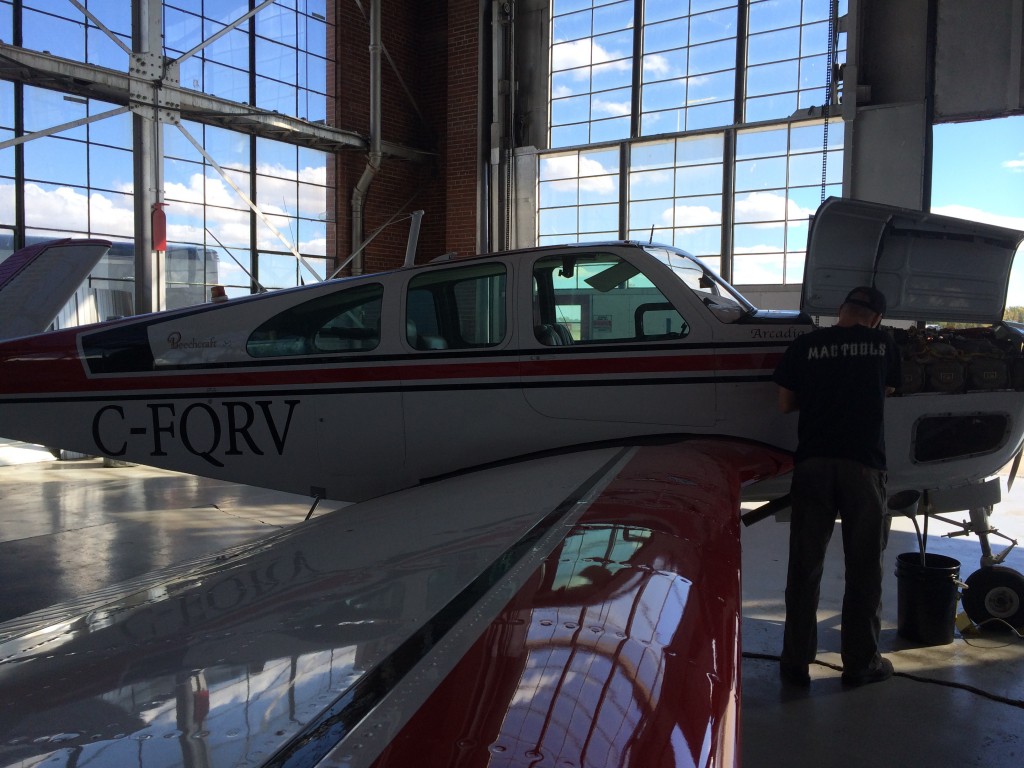 Geoff's hospitality was outstanding. Arcadia and I have never felt more at home. And Geoff can tell stories!
Geoff's hospitality was outstanding. Arcadia and I have never felt more at home. And Geoff can tell stories!
In the early days there was a control tower up there on the roof. See that black pipe up there where it comes down through the ceiling? That was the controllers' pee tube.
OK, look carefully at the floor. See there, near the middle? How there's a sort of shallow mound? That's where the fire pit was, when they were building this place. They would start the fire with oak wood, and when they got that going they'd add coal. Heat up those one-inch rivets cherry red. They wore big gauntlets. They'd grab a red-hot rivet and throw it up to the rafters, where one of the two guys up there would catch it. Then they'd fit it, buck it, and forge it in place in seconds, still red-hot.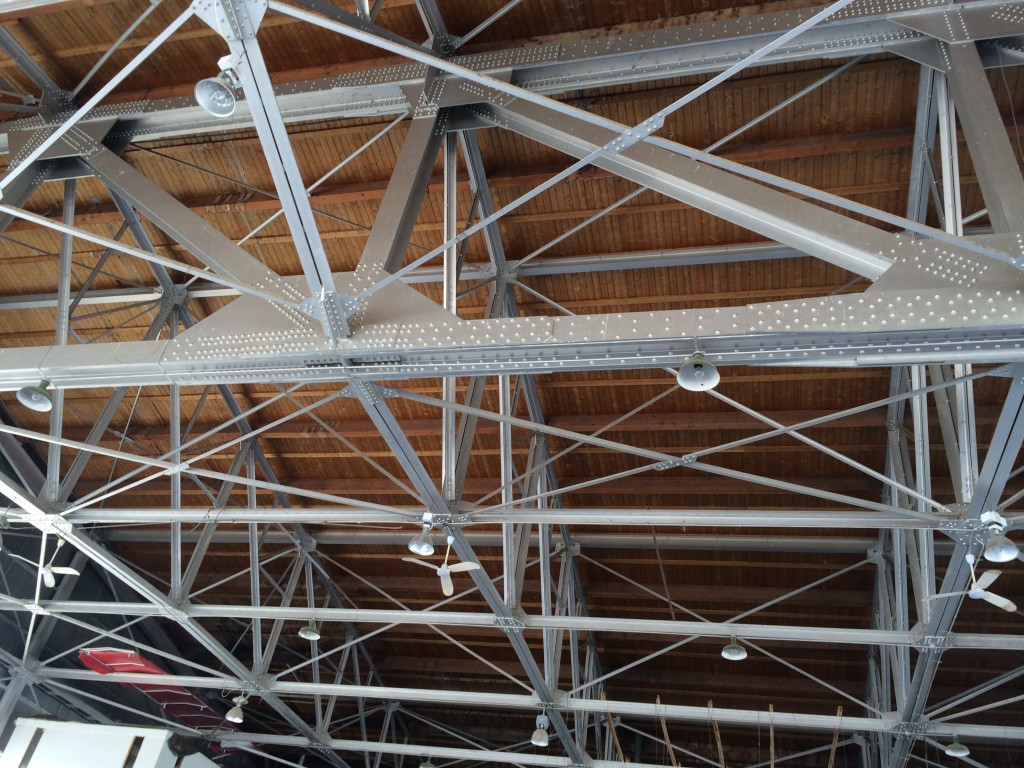 Yep, that's a lot of rivets.
Yep, that's a lot of rivets.
B-26 firebomber used to live here. Then for awhile Brodeur owned the place. Canned beans and peas. Stored the cases of cans here. Place was full right up to the roof.
The hangar was built by Dominion Bridge. The doors? Built by Richards Wilcox, a company owned by Dominion Bridge. What? Yeah, they're unique. Let me show you. See, first the bottom half rises. Then if you need full height . . .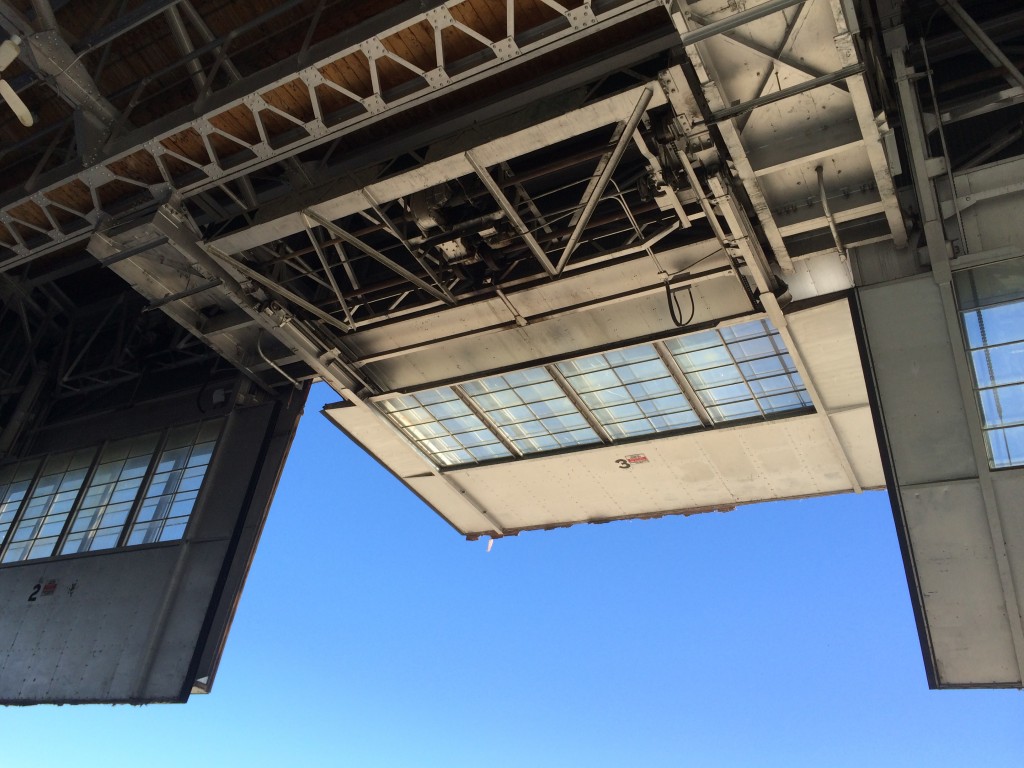 . . . OK, yeah – there's the motor. And the transmission. See how it drives two output shafts? The lower shaft lifts the bottom half of the door with those chains. Then the top shaft tilts the whole assembly up using those lever arms.
. . . OK, yeah – there's the motor. And the transmission. See how it drives two output shafts? The lower shaft lifts the bottom half of the door with those chains. Then the top shaft tilts the whole assembly up using those lever arms.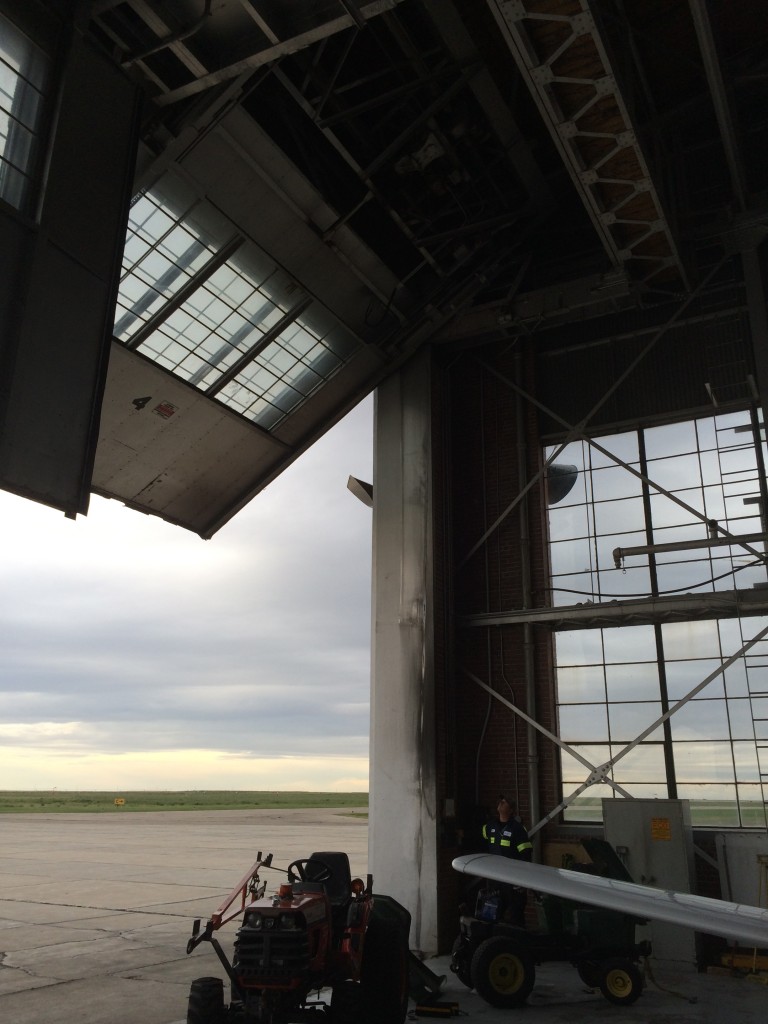 Come see some of the pictures. There's TCA's route structure in 1939. And here's the history of the four airports. See that little photo in the middle? That's this hangar in 1939, when TCA owned it.
Come see some of the pictures. There's TCA's route structure in 1939. And here's the history of the four airports. See that little photo in the middle? That's this hangar in 1939, when TCA owned it.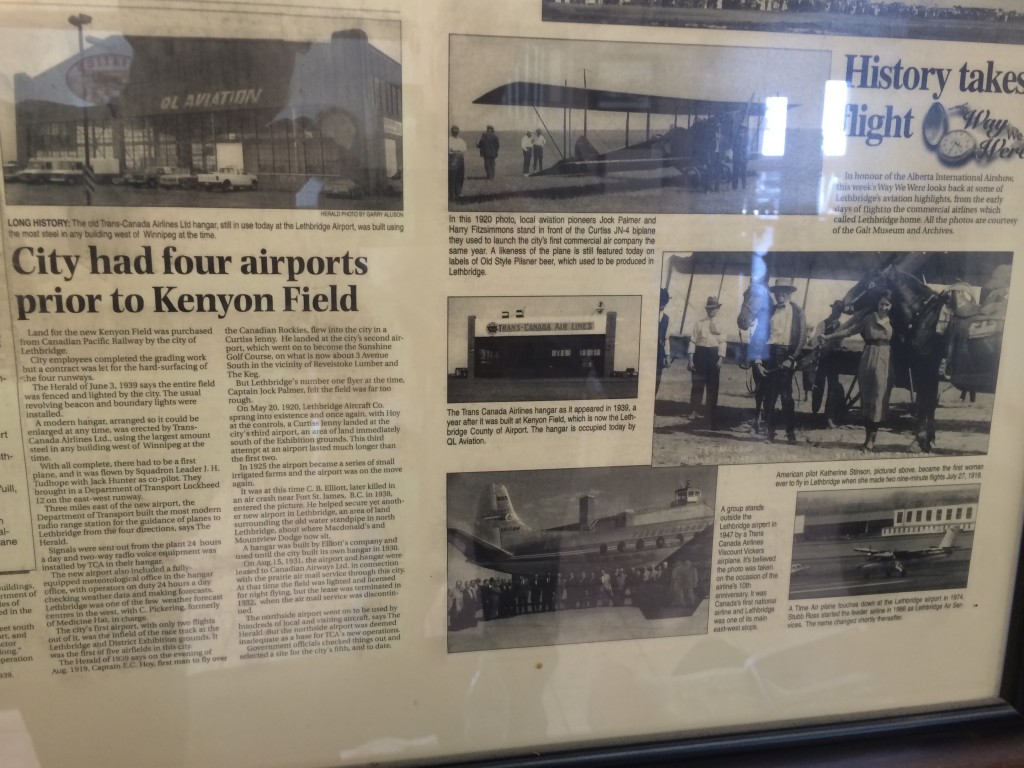 Saturday I flew the last leg to Vancouver. It was like flying through a time-tunnel.
Saturday I flew the last leg to Vancouver. It was like flying through a time-tunnel.
In Lethbridge I felt as if I could touch 1939. That feeling faded away on descent and approach into Vancouver. It was the CYVR I remember but busier, with B-777 traffic sliding under us, multiple runway and approach changes, and frantic media. From slow deep breathing to a heart-pounding pace.
But on the way were the Rockies, and we flew history, following the Green One Airway as best we could, turning toward Hope as the poor pilots of TCA 810 did not. I think of them and of all of Canada's pilots. Rest in peace, you who have passed on.
